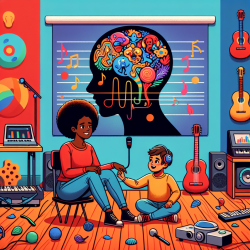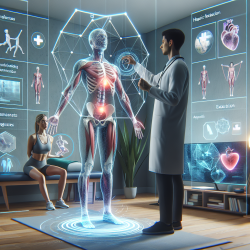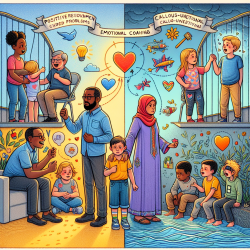Recent research titled "Effects of different types of visual music on the prefrontal hemodynamics of children with autism spectrum disorder based on functional near-infrared spectroscopy" offers valuable insights for practitioners aiming to enhance therapeutic outcomes for children with Autism Spectrum Disorder (ASD). This study utilizes functional near-infrared spectroscopy (fNIRS) to examine how different types of visual music affect the prefrontal cortex (PFC) in children with ASD compared to typically developing (TD) children.
Key Findings
The study reveals that different types of visual music elicit varied hemodynamic responses in the prefrontal regions of children with ASD and TD children. Specifically, the study found:
- Red light and positive music led to lower activation in the prefrontal region F in children with ASD compared to green light and neutral music, and blue light and negative music.
- Visual musical tasks 1, 2, 3, 4, and 8 positively activated the prefrontal B and E regions in children with ASD, while negatively activating these regions in TD children.
- Visual musical tasks 5, 9, 10, and 12 negatively activated the prefrontal F region in children with ASD, but positively activated it in TD children.
Implications for Practitioners
Practitioners can leverage these findings to tailor visual music therapy sessions more effectively. Here are some actionable insights:
- Personalized Approach: Given the inconsistent effects of different types of visual music on children with ASD, it is crucial to personalize therapy sessions based on individual responses.
- Visual and Auditory Integration: Focus on integrating both visual and auditory stimuli in therapy sessions to enhance higher-order social, communication, and cognitive skills.
- Task Selection: Select visual musical tasks that positively activate specific regions of the prefrontal cortex to achieve desired therapeutic outcomes.
Encouraging Further Research
While this study provides a foundational understanding, further research is needed to explore the long-term effects and efficacy of visual music therapy. Expanding the sample size and conducting longitudinal studies will help validate these findings and develop more targeted interventions.
To read the original research paper, please follow this link: Effects of different types of visual music on the prefrontal hemodynamics of children with autism spectrum disorder based on functional near-infrared spectroscopy.










